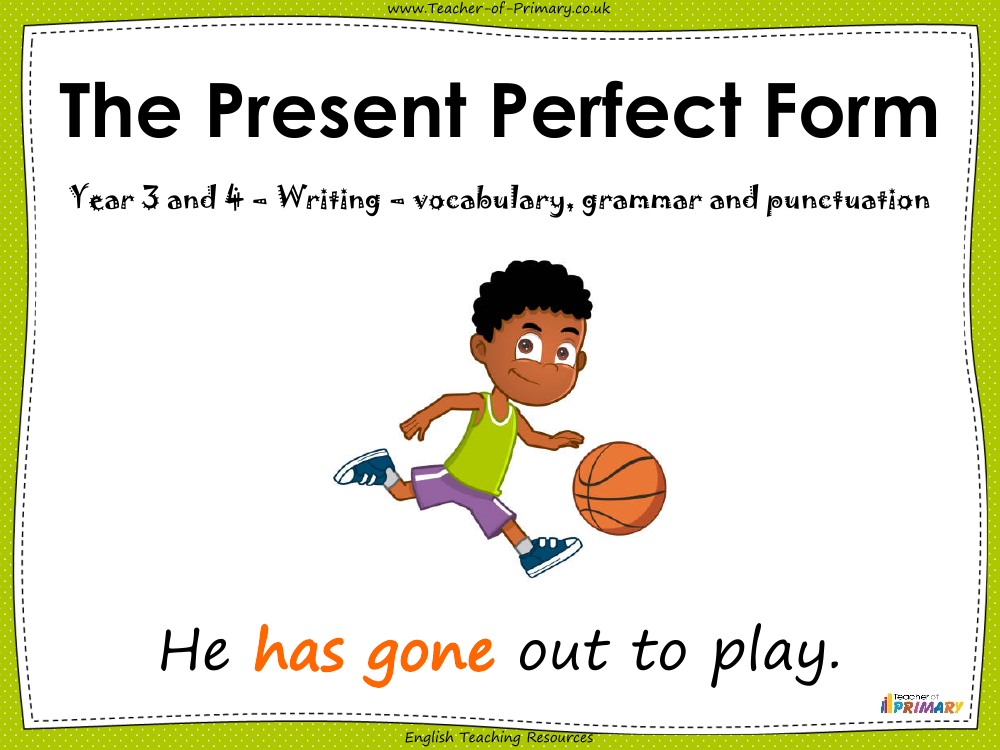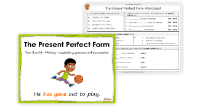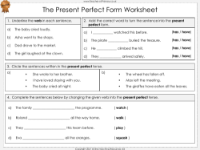The Present Perfect Form - PowerPoint

English Resource Description
The educational resource delves into the intricacies of the present perfect tense for Year 3 and 4 students, focusing on the distinction between the past simple and present perfect forms. Learners are introduced to the concept that the present perfect tense is used to describe actions that have been completed but are still relevant to the present moment. For instance, the statement "He has gone out to play" exemplifies the present perfect tense, indicating that the action of going out has occurred, but its effects are ongoing. Through a series of objectives, the resource aims to teach students not only to recognize the difference between the past simple and present perfect tenses but also to understand when to appropriately use the present perfect tense.
Students are engaged in interactive activities, such as sorting sentences into past simple and present perfect groups, to reinforce their understanding of the two tenses. They learn that the present perfect tense is formed by combining 'has' or 'have' with the past participle of the verb, which can be particularly tricky with irregular verbs. Worksheets are provided to practice identifying verbs in sentences, converting sentences into the present perfect tense, and distinguishing between sentences written in different tenses. Additionally, students are encouraged to write sentences in the present perfect tense using given verbs, further cementing their grasp of this grammatical structure. The resource is designed to make the learning process engaging and comprehensive, with clear explanations and practical exercises.


